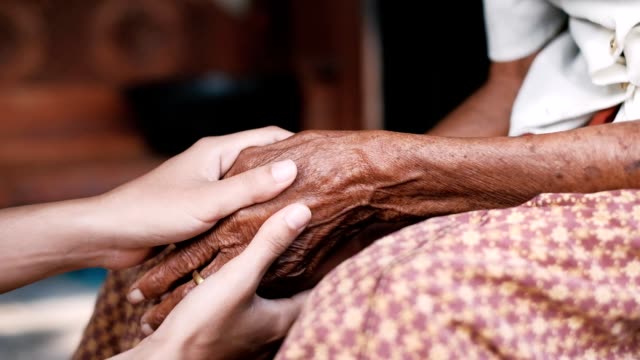Relationships between the elderly and young generations vary widely across cultures. As demonstrated in the high prevalence of multi-generational households in many collectivist cultures, adult children live with their own children and care for aging parents in the same household. In collectivist-leaning cultures, ties to family and the care for older family members take precedence over other things like one’s career or mobility. Traditionally, multi-generational households and family-provided care are not givens in cultures that place great value on individualism. However, in recent years, some highly individualistic cultures, specifically the United States and United Kingdom, have seen an increase in the prevalence of multigenerational households (Intergenerational, 2020; Tapper, 2019).
In 2015, the chief of geriatrics and palliative medicine at Northwell Health in New York, Maria D. Carney, MD, estimated through her research that twenty-five percent of adults over the age of sixty-five in the U.S. lack a caregiver and may become isolated socially and physically (Aging 2015). A body of research demonstrates that strong intergenerational relationships are significant in diminishing the negative mental health effects of elderly isolation and are mutually beneficial for young people as well (Zhang 2018). Intergenerational relationships benefit youth in fostering a positive, more accessible outlook on the aging process, increasing self esteem, and creating opportunities to practice social skills, empathy, tolerance, and patience. (Lloyd, 2008; Elizz, 2016). Likewise, these relationships are necessary for exchanging cultural identity, values, and knowledge (Lloyd, 2008).
In light of the fact that many elderly adults are left to age in isolation, the source of care for those to whom care is accessible (another harsh truth) lies in geriatric social workers and social programs (Snedeker, 2017). Fortunately social initiatives to combat ageism and create frameworks for intergenerational relationships to thrive are in place and expanding in some traditionally individualistic cultures. For instance, Generations United, a U.S. organization whose mission is to improve lives through opportunities for intergenerational connection, has a database containing almost 700 intergenerational programs in the U.S. According to the database, in New Orleans, some intergenerational programming can be found through Kingsley House and Tulane University’s CACTUS Project: Project Grand People.
Playtime is a prime vehicle for facilitating strong intergenerational bonds. As the 20th century psychoanalyst Donald Winnicott put it, “It is in playing and only in playing that the individual child or adult is able to be creative and to use the whole personality, and it is only in being creative the individual discovers the self.” One 2017 article on intergenerational learning programs suggests the use play prompts, such as reading picture books, having tea with a tea-set, blowing bubbles, singing songs, and drawing with crayons (Durand, 2017). For store-bought games and toys, if the packaging says “for ages 0-99,” it’s in the clear!
Intergenerational relationships facilitated through play can extend beyond the physical world into the digital world. Building on past research exploring the beneficial nature of digital gameplay between young people and the elderly, a 2018 study found that quality gaming served as a fun way for family members of different generations to keep in touch (Zhang, 2018). In the times we are living in, specifically in the spin of COVID-19, elderly isolation is particularly poignant, and the intergenerational relationship solutions that remain (for now) are relegated to the digital realm. Although confinement to platforms such as Zoom and Skype has its own set of challenges, it also serves as an opportunity to create solutions in the world of digital accessibility.
This quarantine…
Tune into live panels featuring TPN.Health members, experts in the behavioral health field.
If you are in need of CEUs, now is the time to get them digitally through the TPN.Health platform.
Click here to create your own TPN.Health clinical profile to access these benefits and track your referral network!
References:
Aging baby boomers, childless and unmarried, at risk of becoming ‘elder orphans’. (2015, May 15). Retrieved from https://www.sciencedaily.com/releases/2015/05/150515083532.htm
Elizz: Benefits of intergenerational programs for seniors (2016). https://elizz.com/caregiver-resources/cool-stuff/benefits-intergenerational-programs-seniors.
Lloyd, J.: The State of Intergenerational Relations Today: A Research and Discussion Paper.International Longevity Centre, London (2008)
Multigenerational Households. (2020). Retrieved from https://www.gu.org/explore-our-topics/multigenerational-households/
Durand, S. (2017, September 12). You’re Never Too Old To Play: Intergenerational Learning Programs. Retrieved from https://www.geteduca.com/blog/intergenerational-learning/
Snedeker, L. (2017). Aging and Isolation–Causes and Impacts. Social Work Today, 17.
Tapper, J. (2019, March 10). All under one roof: the rise and rise of multigenerational life. Retrieved from https://www.theguardian.com/society/2019/mar/10/rise-of-multigenerational-family-living
Zhang, F. (2018). Intergenerational Play Between Young People and Old Family Members: Patterns, Benefits, and Challenges. Human Aspects of IT for the Aged Population. Acceptance, Communication and Participation Lecture Notes in Computer Science, 581–593. doi: 10.1007/978-3-319-92034-4_44
Image Credit: https://www.istockphoto.com/video/old-hand-in-young-hands-for-holding-helping-giving-support-gm1003673508-271147554
